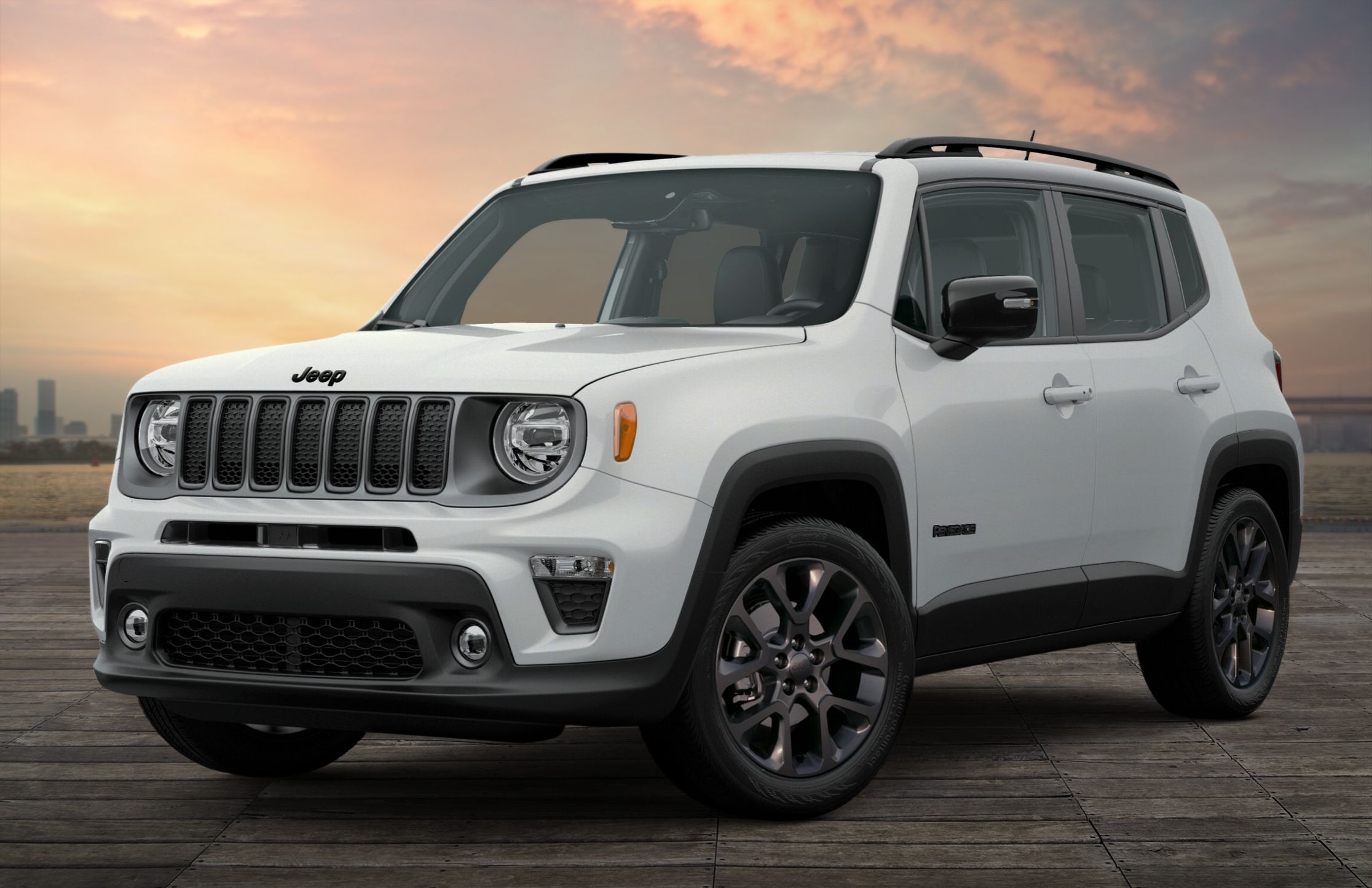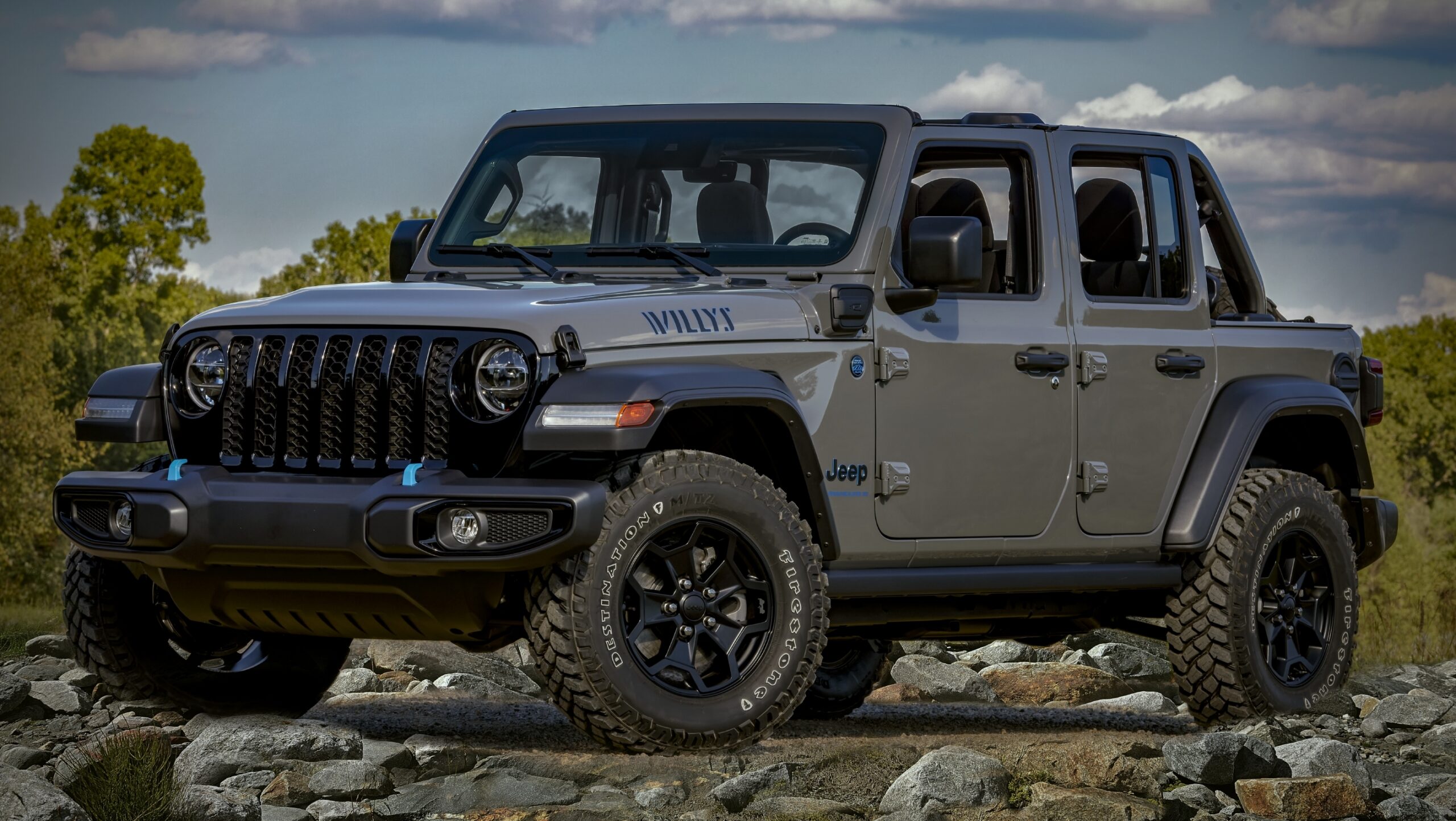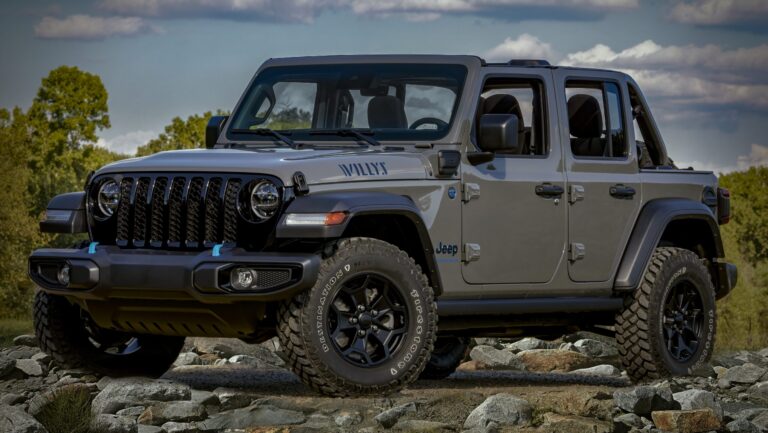Jeep JK Front Dana 44 For Sale: Your Ultimate Guide to an Essential Upgrade
Jeep JK Front Dana 44 For Sale: Your Ultimate Guide to an Essential Upgrade jeeps.truckstrend.com
The Jeep Wrangler JK, produced from 2007 to 2018, stands as a testament to off-road capability and customization. While a formidable vehicle in its stock form, serious off-road enthusiasts and those looking to run larger tires inevitably seek upgrades to enhance durability and performance. Among the most crucial and sought-after modifications is the Jeep JK Front Dana 44 axle. This article serves as a comprehensive guide for anyone considering purchasing a Jeep JK Front Dana 44 for sale, detailing its importance, benefits, considerations, and practical advice to ensure a successful acquisition.
Understanding the Jeep JK Front Dana 44 Axle
Jeep JK Front Dana 44 For Sale: Your Ultimate Guide to an Essential Upgrade
At its core, an axle is a central shaft for a rotating wheel or gear. In a vehicle, axles transmit power from the transmission to the wheels. The Dana 44 is a specific model of solid axle manufactured by Dana Spicer, a renowned name in automotive driveline components. For the Jeep JK, the front Dana 44 axle is particularly significant because it was the beefier option offered from the factory, primarily found in the Rubicon trim level.
Compared to the standard Dana 30 front axle found in Sport and Sahara models, the Dana 44 boasts several key advantages:
- Larger Ring and Pinion: A bigger gear set means greater strength and a larger contact patch for the gears, reducing the likelihood of stripping under heavy load.
- Larger Axle Tubes: The Dana 44 features thicker and wider axle tubes, providing increased structural rigidity and resistance to bending.
- Stronger Axle Shafts: While factory shafts can still be a weak point under extreme conditions, the Dana 44 generally comes with stronger, larger diameter shafts than the Dana 30.
- Optional Locking Differential: Rubicon Dana 44s come equipped with an electronic locker, providing true 4×4 capability by locking both front wheels together, an invaluable asset on challenging terrain.

For these reasons, the Jeep JK Front Dana 44 has become the gold standard for many JK owners looking to significantly upgrade their vehicle’s front end without resorting to expensive, heavy-duty aftermarket solutions right away.
Why Upgrade to a Dana 44 Front Axle? The Benefits Unveiled
The decision to swap out a stock Dana 30 for a Dana 44 is driven by a clear set of performance and durability advantages:
- Increased Strength and Durability: This is the primary motivator. The Dana 44 is inherently stronger than the Dana 30, designed to withstand the increased stresses of larger tires, aggressive off-road driving, and heavier loads. This translates to fewer broken components and more time on the trails.
- Ability to Handle Larger Tires: While a Dana 30 can technically run 35-inch tires, it’s pushing its limits, especially with aggressive off-roading. A Dana 44, even in stock form, is much more capable of reliably handling 35s and even 37-inch tires, often with only minor additional reinforcement (like C-gussets). For 40-inch tires and beyond, a Dana 44 can serve as a strong foundation with further internal and external upgrades.
- Improved Off-Road Capability: If acquiring a Rubicon Dana 44, the integrated electronic locker instantly elevates your JK’s off-road prowess. This feature allows both front wheels to receive equal power, crucial for navigating challenging obstacles where one wheel might lose traction. Even without a factory locker, the Dana 44’s robust design allows for easy installation of aftermarket locking differentials.
- Peace of Mind: Knowing your front axle can handle the demands you place on it provides significant peace of mind during challenging off-road excursions. Less worry about breaking parts means more focus on enjoying the adventure.
- Better Resale Value: A Jeep JK with an upgraded Dana 44 front axle is a more desirable vehicle on the used market. It indicates a well-maintained and capable build, which can command a higher resale price.
Key Considerations When Buying a Jeep JK Front Dana 44
Purchasing a used Dana 44 requires careful consideration to ensure you get a good deal and a reliable component.
- Condition: Used vs. New (Crate Axles):
- Used OEM Rubicon Dana 44: These are the most common "for sale" options. They can be excellent value but require thorough inspection. Look for bends, cracks, excessive rust, or damage to mounting points.
- New Aftermarket Crate Dana 44s: Brands like Dynatrac, Currie, TeraFlex, and G2 offer brand-new, often significantly stronger "Super" or "Heavy Duty" Dana 44s. These are bolt-in ready, come with warranties, and can be custom-built with desired gearing and lockers, but they come at a premium price.
- Gearing: This is paramount. Your new front axle’s gear ratio must match your rear axle’s ratio for the 4WD system to function correctly and prevent damage. Common JK ratios include 3.21, 3.73, 4.10, 4.56, 4.88, 5.13, and 5.38. Verify the ratio before buying, either by checking the tag (if present) or by rotating the pinion and counting wheel revolutions.
- Locker Status: Does it have a locker? If it’s a Rubicon axle, it should have the electronic locker. Test its functionality if possible. If not, budget for an aftermarket locker if desired.
- Axle Shafts: Are they stock, or have they been upgraded to chromoly or RCV shafts? Upgraded shafts add significant strength. Inspect U-joints for play or rust.
- Ball Joints: These are common wear items on JKs. Check for excessive play by jacking up the wheel and trying to wiggle it at 12 and 6 o’clock. Worn ball joints will need replacement, which adds to the cost.
- Housing Condition: Look for signs of impact, bending (especially under the differential pumpkin), or poorly done welding if any repairs or reinforcements have been made.
- C-Gussets/Truss: Has the axle been reinforced? C-gussets strengthen the "C" shaped knuckle forging, preventing bending, and a full truss reinforces the axle tubes. These are highly desirable upgrades if present.
- Steering Components: Inspect the tie rod, drag link, and track bar. Are they stock or aftermarket? Check for bends, worn tie rod ends, or loose bolts.
- Brakes: Check the condition of rotors, calipers, and pads. While easily replaceable, it’s good to know what you’re getting.
- Source: Buying from a reputable salvage yard, a specialized Jeep parts dealer, or a private seller with good reviews is always recommended. Be wary of deals that seem too good to be true.
Types of Jeep JK Front Dana 44s Available for Sale
When searching for a Dana 44, you’ll generally encounter a few main categories:
- Used OEM Rubicon Dana 44: This is the most common and often the most cost-effective solution. These are direct bolt-in replacements for any JK, featuring the larger ring and pinion, stronger tubes, and factory electronic locker. Their condition varies widely depending on the donor vehicle and previous owner’s use.
- Used OEM Non-Rubicon Upgraded Dana 44: Less common, but some enthusiasts might have built up a non-Rubicon Dana 44 housing with aftermarket internals. These can be strong but require careful verification of the components.
- Aftermarket "Crate" Dana 44s: As mentioned, these are brand-new, often significantly stronger versions of the Dana 44, sometimes referred to as "Super Dana 44s" or "Ultimate Dana 44s." They typically feature larger axle tubes, heavier-duty knuckles, bigger axle shafts, and can be ordered with specific gearing and lockers. While expensive, they offer unmatched strength and come ready to install.
- Hybrid/Modified Dana 44s: These might be an OEM housing that has been significantly modified with aftermarket tubes, knuckles, or internal components. These can be very robust but require an expert eye to assess the quality of the modifications.
Installation Process and Potential Challenges
Installing a Jeep JK Front Dana 44 is a significant undertaking but generally considered a straightforward "bolt-in" swap for an OEM Rubicon axle.
- Direct Bolt-In (Mostly): An OEM Rubicon Dana 44 is designed to fit directly into any JK chassis. This means control arm mounts, coil spring perches, shock mounts, and track bar mounts are in the correct locations.
- Tools Required: You’ll need a good set of sockets, wrenches, a torque wrench, jack stands, a floor jack, and potentially an impact gun.
- Potential Issues:
- Seized Bolts: Control arm bolts, especially, can seize in their bushings, requiring cutting or significant effort to remove.
- New Components: You might need new control arm bushings, brake lines (especially if upgrading to a lifted suspension), and potentially a new driveshaft if your current one is not compatible or is worn out.
- Driveshaft Clearance: If running a significant lift, ensure your driveshaft clears the new, potentially larger differential housing.
- Gearing Mismatch: This is the most critical issue. If your new front axle’s gears don’t match your rear axle’s, engaging 4WD will cause severe damage to your transfer case and axles.
- Professional Installation vs. DIY: While capable DIYers can perform this swap, it is a heavy and critical component. If you’re not comfortable with suspension work, heavy lifting, or working with brake lines, professional installation is highly recommended. This also ensures proper torquing of all fasteners and correct brake bleeding.
Tips for a Successful Purchase
- Inspect Thoroughly: If buying in person, examine every inch of the axle. Look for bends, cracks, deep gouges, or signs of collision. Check for play in the ball joints, U-joints, and differential.
- Ask Detailed Questions: Inquire about the donor vehicle (if known), the mileage on the axle, why it’s being sold, and any known issues.
- Verify Gearing and Locker: Get clear confirmation of the gear ratio and locker status. If possible, visually verify the gear ratio by spinning the pinion and counting rotations of the wheel hub.
- Get Photos/Videos: If buying remotely, request high-resolution photos and videos of all angles, especially potential problem areas.
- Factor in Shipping Costs: Axles are heavy. Shipping can be expensive, so factor this into your total budget if buying from out of state.
- Set a Realistic Budget: Beyond the purchase price, budget for potential rebuilds (ball joints, bearings, seals), new fluids, and potentially professional installation.
- Consider Aftermarket Reinforcements: Even a Rubicon Dana 44 benefits greatly from C-gussets and potentially a truss, especially if you plan to run larger tires or wheel aggressively. Factor these into your budget.
Price Table: Estimated Costs for Jeep JK Front Dana 44 Axles
Please note: Prices are highly variable based on condition, mileage, included components (brakes, steering), location, and seller. These are general estimates.
| Axle Type | Condition | Gearing/Locker | Key Features/Notes | Estimated Price Range (USD) |
|---|---|---|---|---|
| Used OEM Rubicon Dana 44 | Good Used | Factory (4.10), E-Locker | Minor rust, normal wear, functional locker, stock shafts. | $1,500 – $2,800 |
| Used OEM Rubicon Dana 44 | Excellent Used | Factory (4.10), E-Locker | Low mileage, minimal rust, no play in joints, possibly includes C-gussets. | $2,800 – $4,000 |
| Used OEM Rubicon Dana 44 | Needs Rebuild | Variable, Unknown | Worn ball joints, U-joints, possible gear wear, no guarantee on locker. For parts/rebuild. | $800 – $1,500 |
| New Aftermarket Crate Dana 44 | Brand New | Custom Order | E.g., TeraFlex, G2. Stronger tubes, HD knuckles, new internals, custom gearing/locker. | $4,500 – $7,000+ |
| New Ultimate Dana 44 | Brand New | Custom Order | Dana Spicer’s premium aftermarket axle. Very robust, high-performance. | $5,500 – $8,000+ |
| Used Aftermarket Dana 44 | Varies (Used) | Varies | E.g., Used Dynatrac, Currie. Significant strength upgrades. Price depends on condition. | $3,000 – $6,000+ |
Additional Costs to Consider:
- Shipping: $200 – $600+
- New Ball Joints: $150 – $400 (parts only)
- New U-Joints: $50 – $150 (parts only)
- Gussets/Truss (parts & weld): $150 – $500
- Installation (Professional): $500 – $1,200+ (highly variable by shop/region)
- Gear Swap (if needed for rear): $800 – $1,500+ per axle (parts & labor)
Frequently Asked Questions (FAQ)
Q1: Can I put a Dana 44 front axle in my Jeep JK Sport or Sahara?
A1: Yes, absolutely! The OEM Rubicon Dana 44 is a direct bolt-in replacement for the Dana 30 found in Sport and Sahara models. All mounting points are identical.
Q2: Do I need to change my rear axle too if I upgrade the front to a Dana 44?
A2: Not necessarily. The rear axle on all JKs is already a Dana 44 (albeit a slightly different version than the front). The most critical factor is that the gear ratio in your new front Dana 44 must match the gear ratio in your existing rear Dana 44. If they don’t match, you’ll need to re-gear one or both axles.
Q3: What’s the difference between a "Dana 44" and a "Super Dana 44" or "Ultimate Dana 44"?
A3: A standard Dana 44 refers to the OEM axle. "Super Dana 44" or "Ultimate Dana 44" typically refers to aftermarket Dana 44-based axles (like those from Dynatrac, Currie, TeraFlex, or Dana Spicer’s own Ultimate series) that have been significantly upgraded with stronger components, such as larger axle tubes, stronger knuckles, and beefier internal components, pushing their strength closer to a Dana 60 without the weight penalty.
Q4: How much does professional installation usually cost?
A4: Installation costs vary widely depending on your location, the shop’s labor rates, and any unforeseen issues (like seized bolts). Expect to pay anywhere from $500 to $1,200 or more for labor.
Q5: What size tires can a stock Dana 44 handle reliably?
A5: A stock Jeep JK Dana 44 (especially a Rubicon one) can reliably handle 35-inch tires for general off-roading. For 37-inch tires, it’s highly recommended to add C-gussets to the knuckles and consider chromoly axle shafts. Running 40-inch tires usually requires significant upgrades beyond a stock Dana 44, including a full truss, upgraded shafts, and potentially a larger differential cover.
Q6: What are common failure points on a used Dana 44?
A6: Common wear items and potential failure points include ball joints, U-joints (in the axle shafts), axle seals, and ring and pinion gears if the axle has been abused or improperly set up. The axle tubes can also bend, and the "C" knuckles can deform under extreme stress, which is why gussets are a popular reinforcement.
Conclusion
The Jeep JK Front Dana 44 is more than just an axle; it’s a gateway to enhanced off-road capability and peace of mind for any serious JK owner. Whether you’re upgrading from a Dana 30 or replacing a damaged Rubicon axle, acquiring a Dana 44 for sale is a wise investment in your Jeep’s longevity and performance. By understanding its benefits, diligently inspecting potential purchases, and planning for installation, you can confidently navigate the market and equip your JK with the strength it deserves to conquer any trail. Happy Jeeping!




